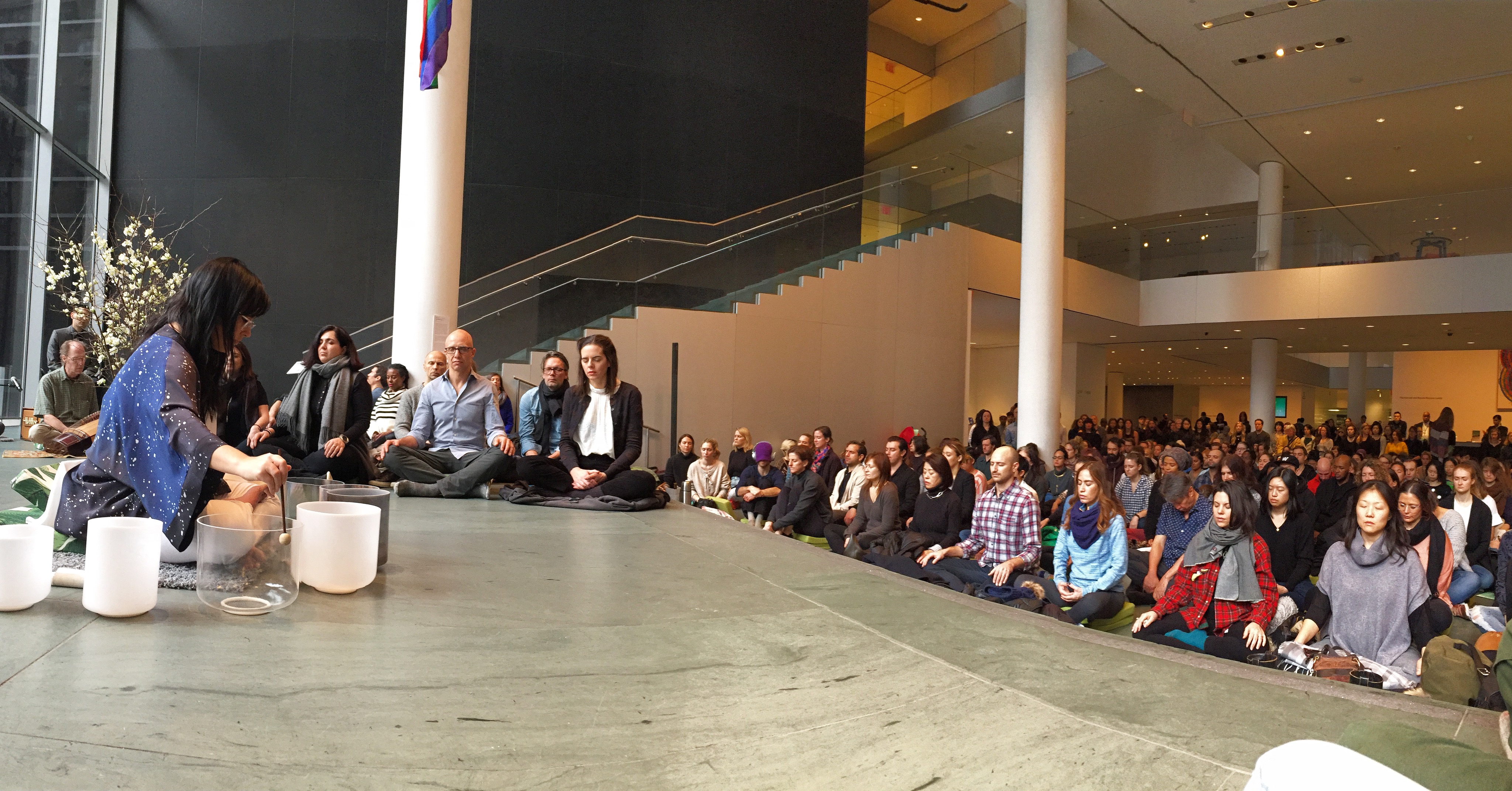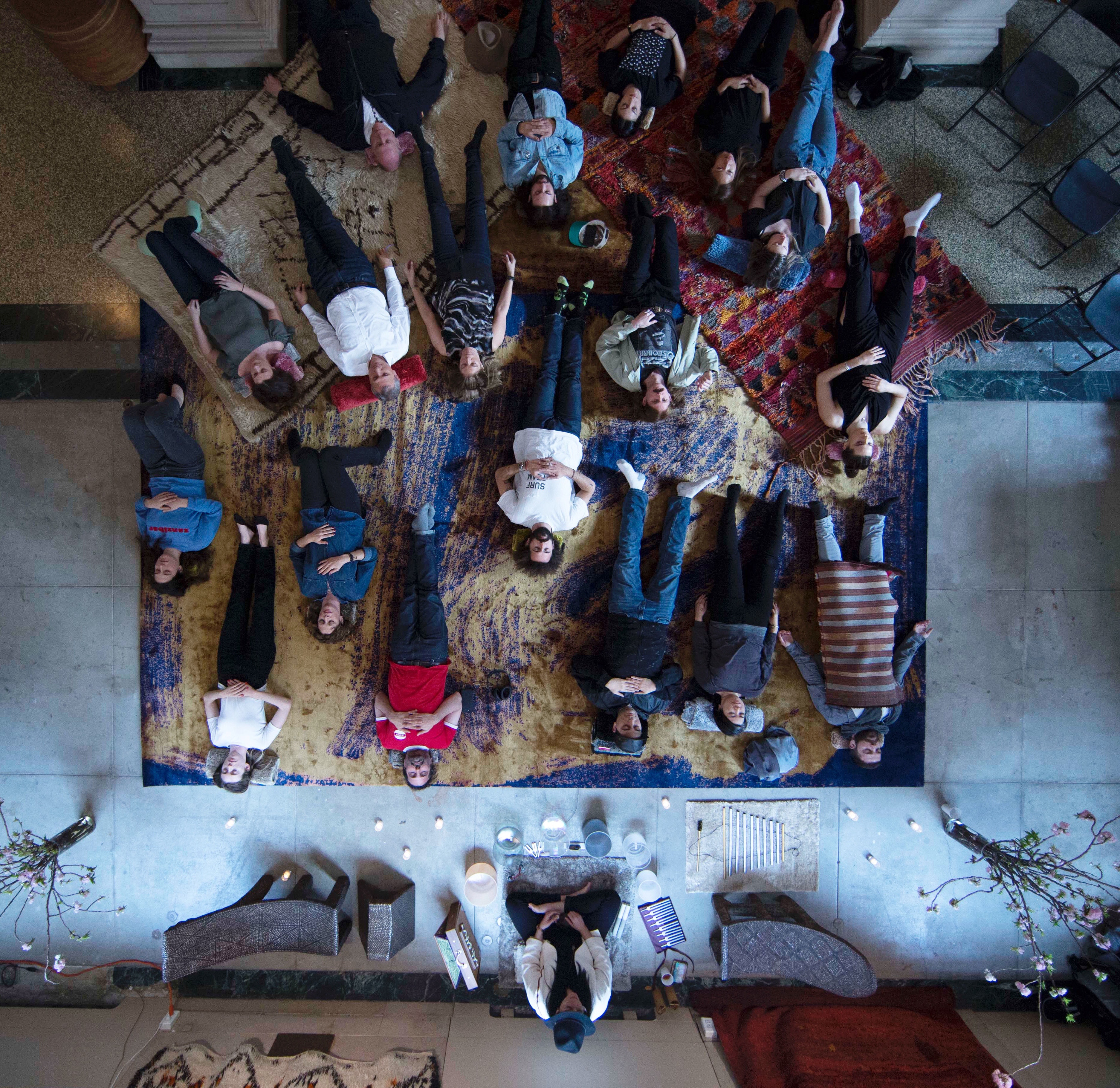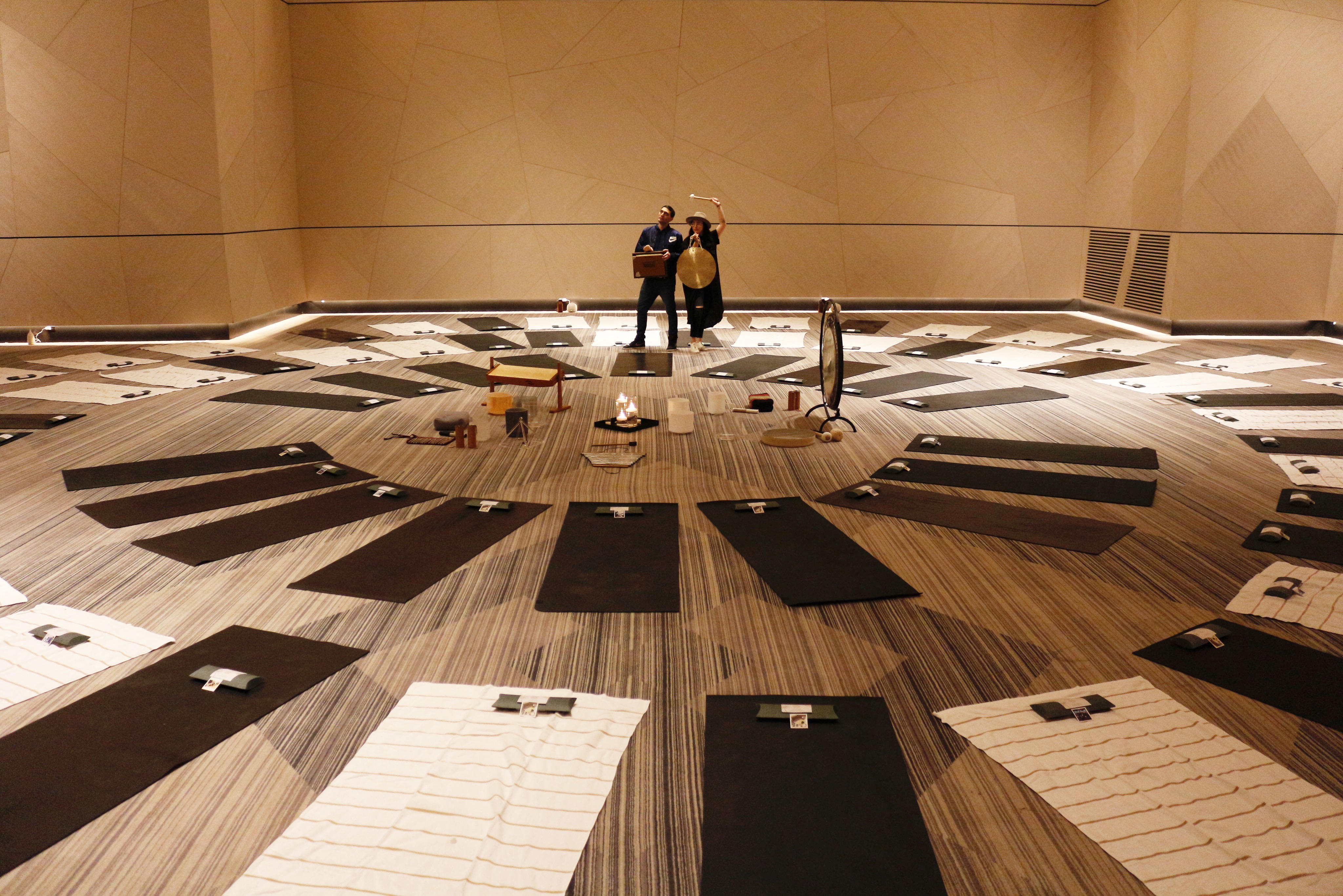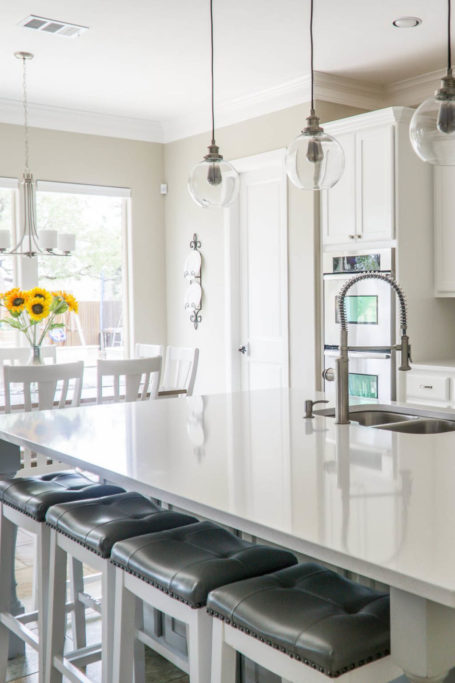Sound-Off with Sara
People practice self-reflection in different ways—some turn to journaling, others find solace within their chosen fitness regimen. Sara Auster is guiding people toward mindfulness and self-reflection in a way that may sound foreign to most people, but is proving to be an immersive experience that helps bring peace to your life: sound meditation.
Here, she discusses what this practice is, the accident that put her on a journey of self-discovery, and the advice she has for those looking to try a new form of relaxation.
What specifically is sound meditation, and how does it differ from, say, traditional meditation?
In traditional meditation there is a point of focus, and, very often, you’re listening to a voice or a guide either by attending a class or via an app. You’re bringing your focus back to the breath, a mantra, an emotion, or a part of the body. In a way, sound is “guiding” the meditation. When we think of guided meditation we think of verbal cues, but this particular type of atonal sound helps facilitate awareness on the present moment and also gives people space to go where they need to go. It definitely takes some of the pressure off. There’s some rigidity around the idea of meditation, a sort of stereotype that you have to do it correctly, and that you have to clear your mind and sit up straight. This approach is much more accessible.
It is important for me to frame mindfulness and meditation as something that’s not elite. It is 100 percent for everyone. I’ve facilitated experiences with infants and people in their 90s, athletes and the terminally ill—people of all races, all ages, and all different types of spiritual and religious backgrounds. There’s a reason people say music is universal.
What is a sound bath?
A sound bath is a meditative event in which sound is used intentionally to invite therapeutic and restorative effects to the mind and body. It’s a practice of deep listening. That sounds pretty simple, but people are rarely aware of how they’re listening. That’s where the mindfulness piece comes in.

When I guide sessions, whether it’s with one person or ten thousand people, it’s about facilitating an awareness of our relationship to sound. When we listen with focus and very directed attention, that practice of mindfulness begins to stay with us and permeates different areas of our lives.
The experience begins with each person lying down or seated in a comfortable position, often with a blanket and an eye mask. After a few minutes of guided focus on the breath, the remainder of the experience is filled with different sounds and frequencies being introduced in succession. The sounds are created by a variety of overtone-emitting instruments including tuning forks, gongs, shruti box, Himalayan and crystal singing bowls, chimes, and voice.
What are among some of the benefits of sound meditation?
This experience can be helpful for anyone who wants to access the benefits from meditation or find a moment of relaxation. A sound bath is an opportunity to explore what a meditative state is and how it feels. The goal is to experience deep rest and relaxation, and explore self-inquiry and self-discovery. Sound can bring balance, relaxation and a sense of wholeness to the body. The sound of harmonic vibrations created by singing bowls, gongs and other overtone-emitting instruments are intended to stimulate the alpha and theta brain waves. These waves are associated with deep meditative and peaceful states that are highly conducive to healing. Sound can also slow down the heart and respiratory rate, creating a therapeutic effect on the mind and body.

You have background in both yoga and the arts. Can you talk more about that, and how those interests eventually led to sound meditation?
I have a background as a musician, an artist, and as a collector and lover of music, and I taught yoga and meditation for over a decade. Music has always been part of my life, and I’ve always known that music has a profound effect on me. I was working as an artist and musician in New York City in 2002. I was awarded a space grant—a subsidized studio space to make my work, right on 42nd Street in Times Square.
Late one night I heard a loud banging sound which I soon came to realize was the floor giving way beneath me. Before I had a chance to react, I was falling about fifteen feet from my studio on the second floor into the first. That fall left me with a broken back in four places, lots of soft tissue damage and temporary paralysis. I was released from the hospital with a brace from my hips to my chin and a script for several painkillers, but no prescription for physical therapy and certainly not psychotherapy. My neurosurgeon gave me the advice, “If it hurts, don’t do it.” You can imagine my frustration.
This set me on my own personal quest to heal my body and mind. You name it, I tried it. It took a team of people, all of my determination and will, and over a decade to finally live a relatively pain-free life. Every time I felt relief I needed to know more, so I explored these modalities with curiosity and a healthy dose of skepticism. I spent over a decade studying several different types of massage therapy and bodywork, traditional Chinese Medicine, yoga, meditation, and eventually psychoacoustics and sound therapy.
The more I worked with sound, the more I understood that if I accepted sound as vibration, (knowing that vibration touches every part of our physical being), then of course sound is not only heard through our ears but through our entire bodies. It affects not only our psychology and physiology, but also reaches us emotionally and spiritually.
What does your daily routine look like? Do you have any general wellness tips or advice for our readers?
I meditate twice a day, but otherwise, each day is different. I travel a lot so I’m constantly having to adapt to new environments.

The most important thing with wellness is to study yourself so you know what you need. Each one of us is uniquely different and there is no one “right” answer to the question of self-care. It may take a lot of time and exploration to learn your body, mind and heart, and what they need each day might be different. More often than not, the most effective ways to take care of yourself are free. Moving your body, working on your thoughts, paying attention to what, and who is in your environment and adjusting accordingly to access support and ease, will greatly aid your overall well-being.
Do you have any upcoming projects in the works?
I’m writing my first book, due out at the end of the year.
Photo credit by saraauster.com
For more info, visit saraauster.com









